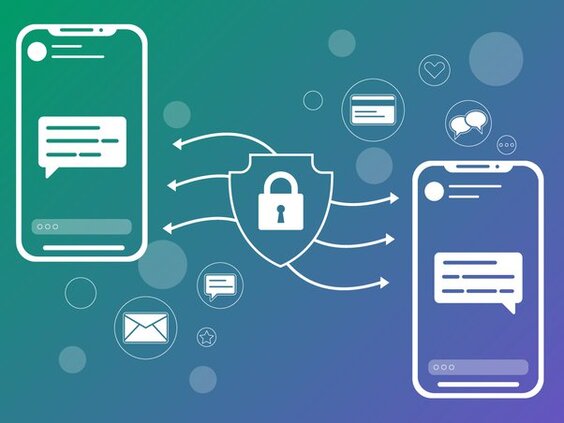

Digital parenting refers to supervising and guiding children's online activities while ensuring their safety and responsible digital engagement. As technology becomes an integral part of education and everyday life, teachers, alongside parents, play a critical role in fostering digital awareness among students.
In schools, where students are exposed to digital devices, social media, and online learning platforms, teachers act as digital mentors. They can bridge the gap between technology and responsible use, ensuring students develop healthy digital habits.
Why Teachers Should Be Digital Mentors
1. Bridging the Digital Knowledge Gap -Many students today are digital natives, while some parents struggle to keep up with evolving technologies. Teachers can serve as informed guides, educating both students and parents about the benefits and risks of digital engagement.
2. Identifying Digital Risks Early - Teachers spend significant time with students and are often the first to notice signs of digital distress. Recognizing behavioral changes related to excessive screen time, cyberbullying, or exposure to inappropriate content can help prevent digital addiction or online exploitation.
3. Encouraging Digital Responsibility - Incorporating digital citizenship lessons in classrooms can help students understand online etiquette, privacy, and the importance of securing personal data.
How Teachers Can Identify Digital Issues in Students
Teachers can spot signs of unhealthy digital habits among students through various indicators:
Behavioral Signs:
-
Excessive use of devices, even during class or break time.
-
Frequent distractions and reduced attention span.
-
Withdrawal from social interactions with peers.
-
Signs of cyberbullying, such as anxiety or secrecy around devices.
-
Decline in academic performance due to digital distractions.
Emotional Signs:
-
Increased stress, irritability, or agitation when restricted from using devices.
-
Signs of low self-esteem due to online comparisons and validation-seeking behaviors.
-
Fear or reluctance to use certain platforms due to cyber threats.
Physical Signs:
-
Frequent complaints about headaches, eye strain, or lack of sleep.
-
Visible exhaustion due to late-night screen use.
-
Lack of participation in physical activities and outdoor games.
Empowering Students Through Digital Education
1. Promote Open Conversations on Digital Well-being
Encourage students to share their online experiences, both positive and negative. Creating a safe space for discussions can help students feel comfortable reporting cyberbullying, online scams, or harmful content exposure.
2. Teach Cyber Hygiene and Digital Etiquette
Introduce lessons on the importance of maintaining digital hygiene, such as:
-
Creating strong passwords and enabling two-factor authentication.
-
Understanding privacy settings on social media.
-
Recognizing phishing attempts and fake news.
-
Respecting digital boundaries and avoiding oversharing.
3. Encourage Healthy Screen Time Habits
Guide students on balancing screen time with offline activities by:
-
Setting device-free study hours.
-
Encouraging hobbies like reading, sports, and creative arts.
-
Educating them on the negative effects of prolonged screen exposure on mental and physical health.
4. Integrate Digital Parenting Workshops for Parents and Students
Organizing digital parenting sessions can help parents understand their role in supervising and guiding their child’s digital habits. These sessions can cover topics such as:
-
Setting family screen time limits.
-
Using parental control tools effectively.
-
Having constructive discussions about online safety at home.
5. Implement School Policies on Responsible Technology Use
Schools can enforce responsible digital behavior through policies such as:
-
Defining acceptable device usage in classrooms.
-
Implementing cyber ethics guidelines for students.
-
Encouraging reporting mechanisms for cyberbullying and online harassment.
How Teachers Can Support Parents in Digital Parenting
1. Keep Parents Informed About Digital Trends - Regular updates on new social media apps, online games, and potential risks help parents stay ahead in their digital parenting journey.
2. Share Educational Resources - Providing parents with articles, webinars, and tools on digital safety can empower them to guide their children effectively.
3. Encourage Collaborative Efforts - A strong partnership between parents and teachers can help reinforce safe digital habits at home and school, ensuring a well-rounded digital education for students.
Conclusion
In an era where digital presence is inevitable, teachers have a crucial responsibility to guide students toward safe and responsible online habits. By identifying digital risks early, fostering open discussions, and collaborating with parents, educators can create a safer online environment for students. Digital parenting is not just a parental duty—it’s a shared responsibility that requires the involvement of teachers, parents, and students to build a digitally responsible generation.
Let’s empower our classrooms with knowledge and ensure students thrive in a safe and ethical digital landscape!
Cyber Hygiene Foundation
- TeachersOnlineSafety CyberAwareEducators DigitalSafetyForTeachers EdTechSecurity TeacherCyberSafety CyberAwareness CyberSafety SafeInternetForAll CyberHygieneForAll
You May Also Like It
The internet has transformed the way children learn, play, and
Instant messaging (IM) platforms have become indispensable for communication in
Leave A Comment
Don’t worry ! your e-mail address will not published.








0 Comments